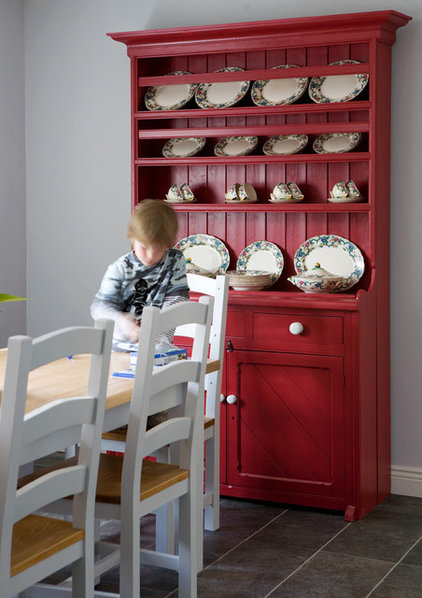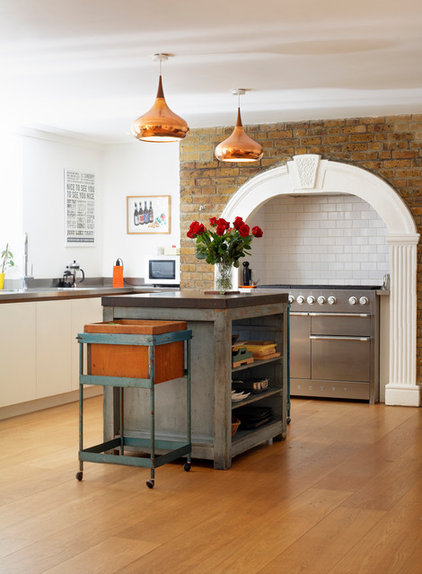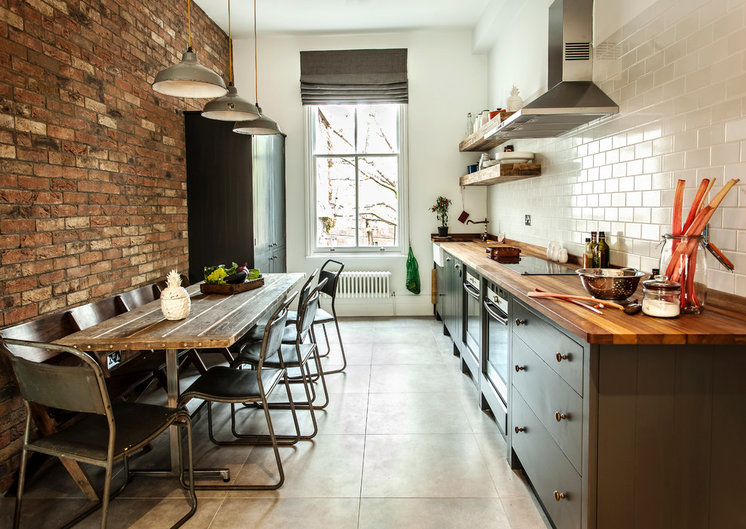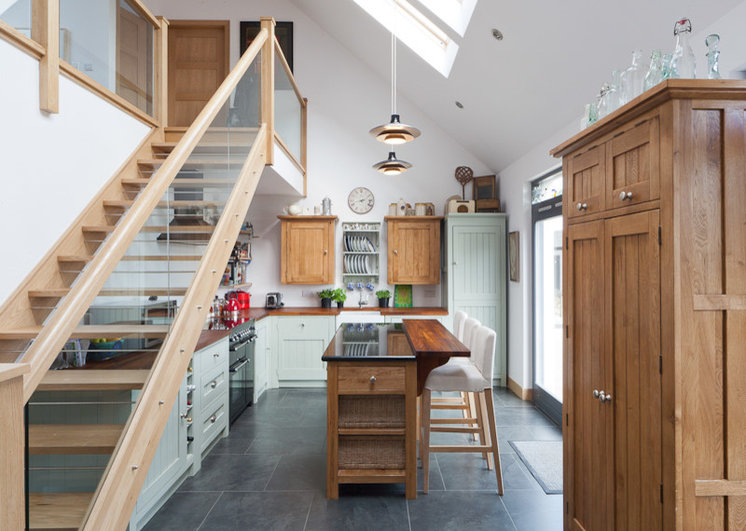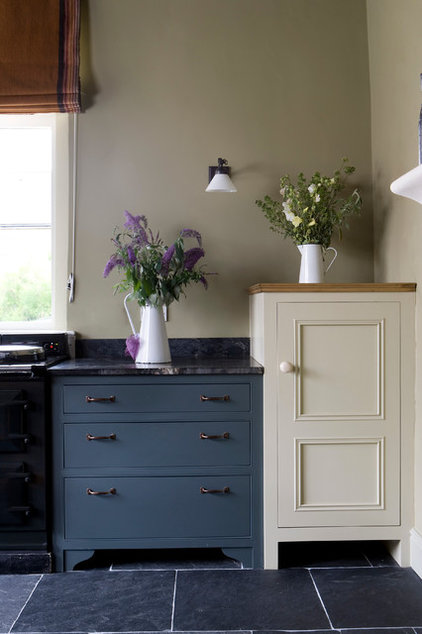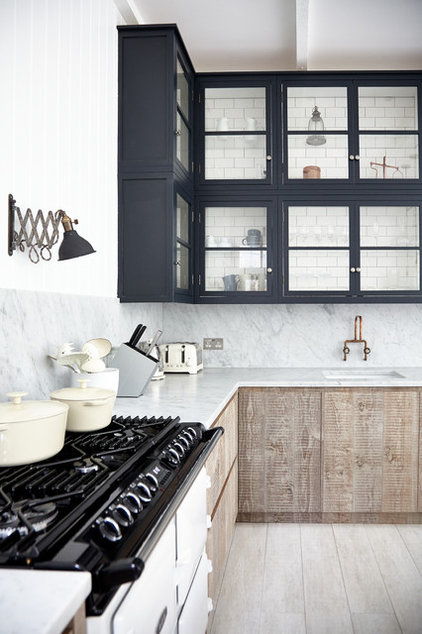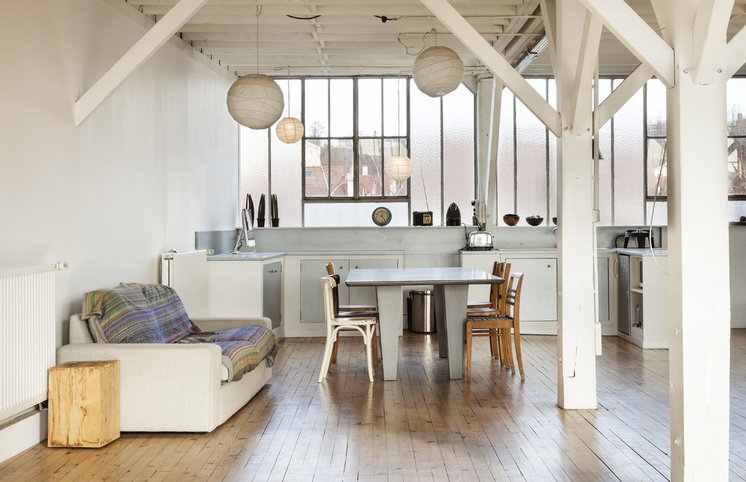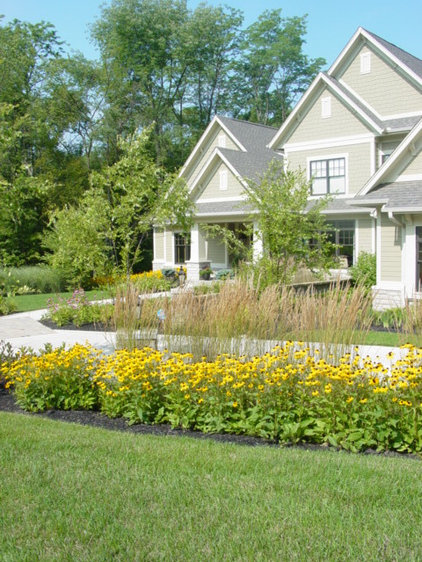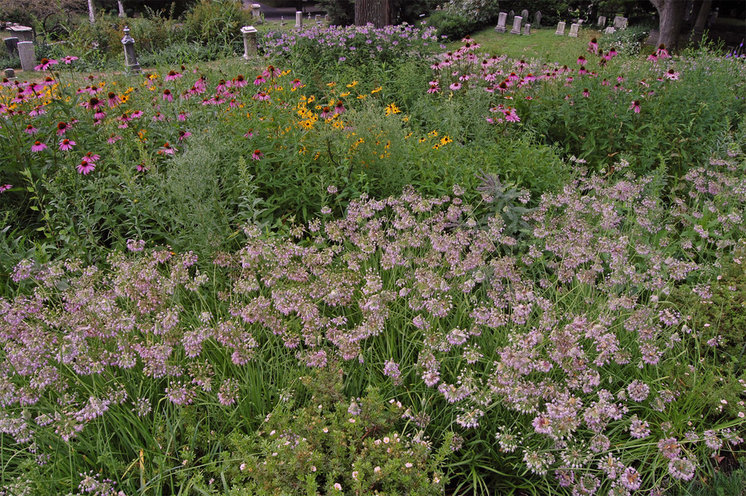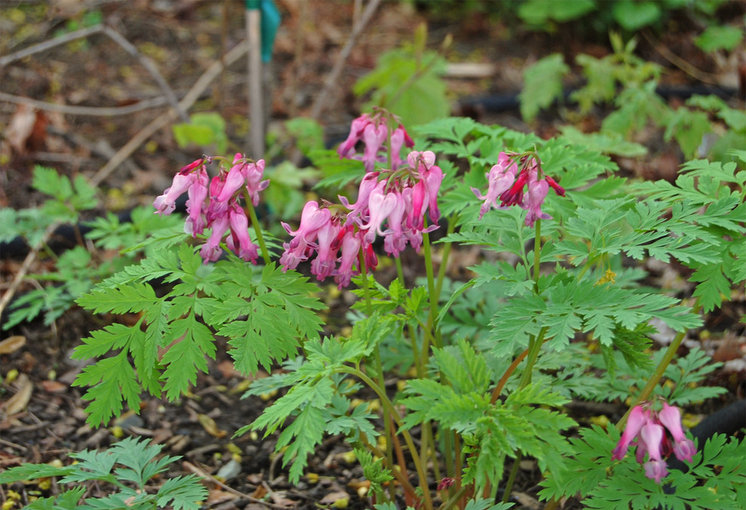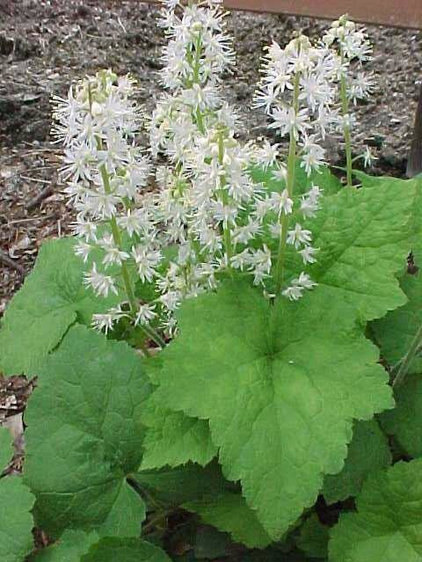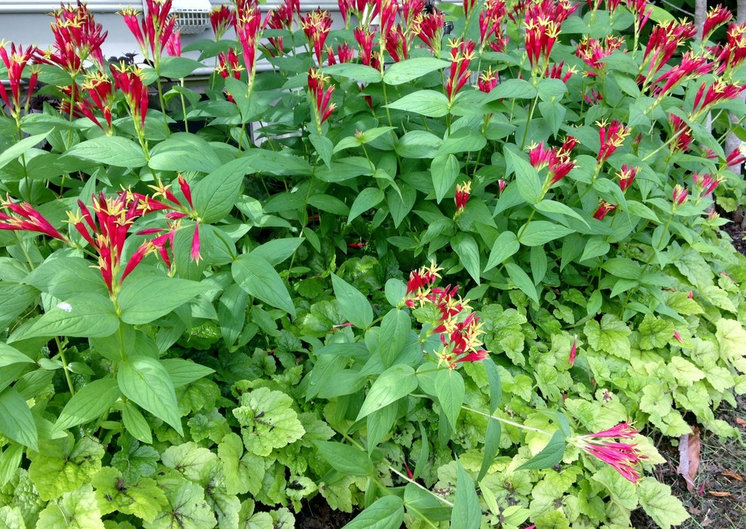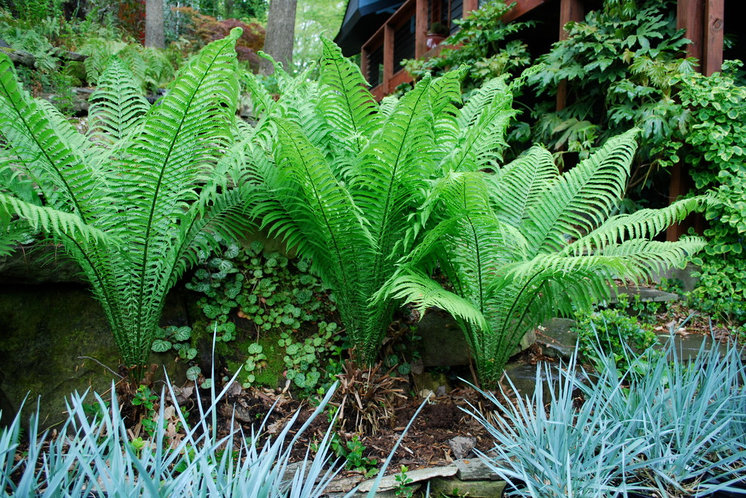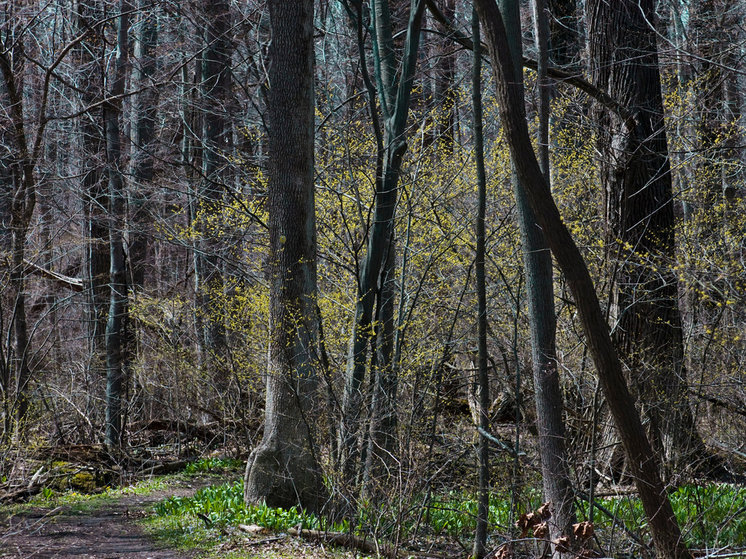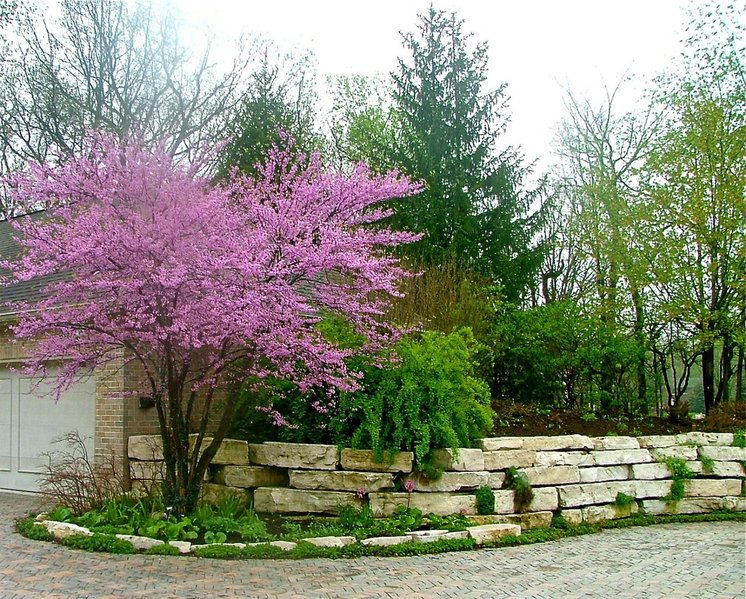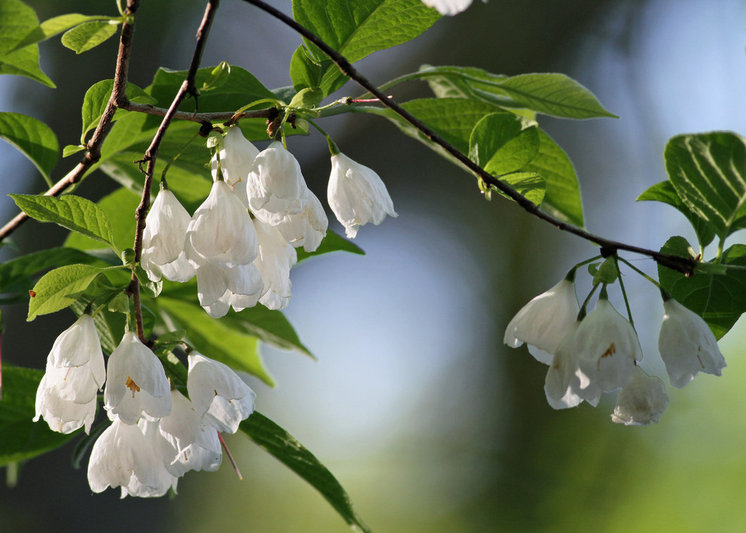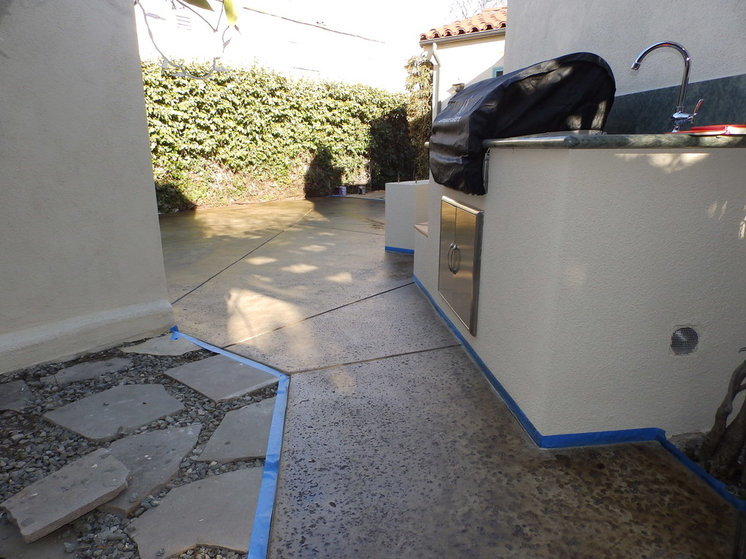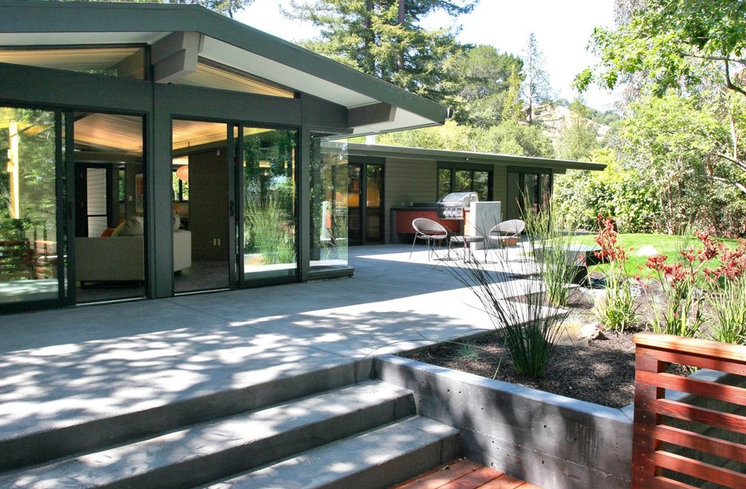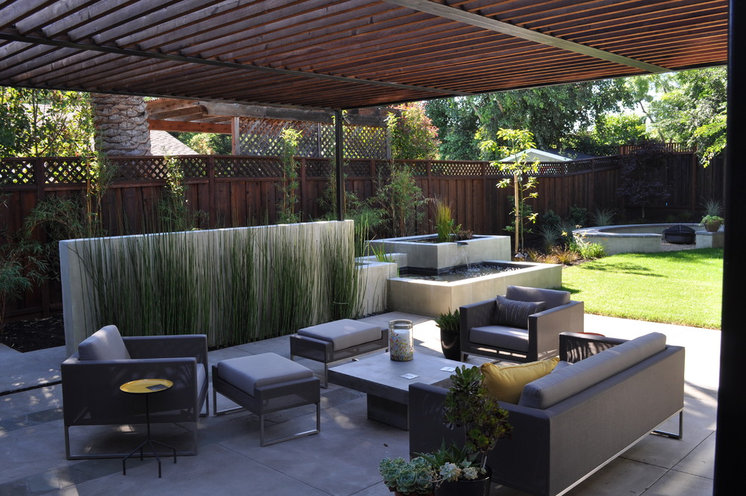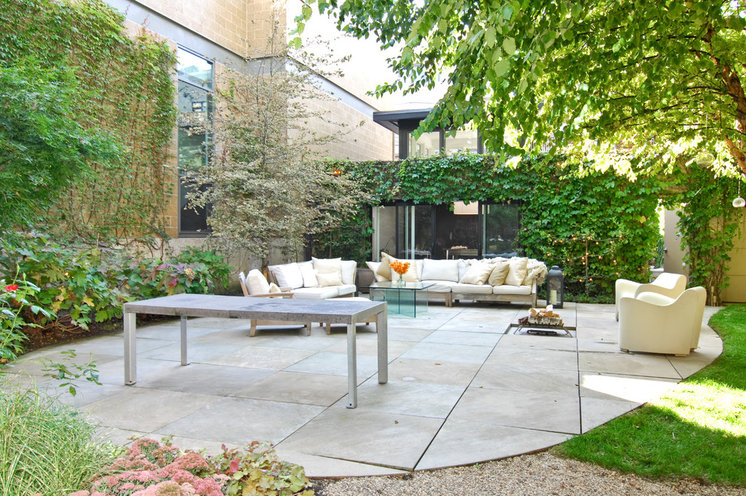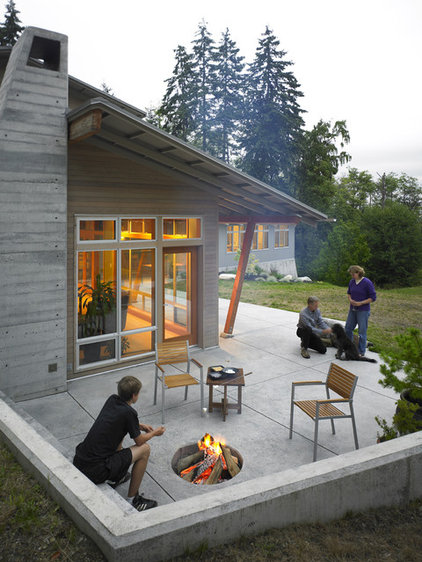Tag Archives: Real Estate
The Perils of Retirement at 65
“When to retire? It’s a question we ask ourselves, and have probably come up with several different answers over the years. Here are some things to think about when making that decision.”
Denise Buck & Ed Johnson – DC Metro Realty Team
Age 65 is the year we traditionally associate with retirement, but this age is declining in significance. Only one major retirement benefit still kicks in at this age, and plenty of people aspire to retire at both earlier and younger ages. Here’s a look at why age 65 no longer resonates as a target retirement age:
[See: 10 Numbers Everyone Should Know About Social Security.]
You won’t qualify for full Social Security benefits. While you can begin Social Security payments as early as age 62, you won’t get the full amount you have earned unless you sign up at your full retirement age. The full retirement age used to be 65 for people born in 1937 or earlier, but has since been increased to 66 for most baby boomers and 67 for everyone born in 1960 or later. If you claim your Social Security benefit at age 65 you will get a reduced monthly payment compared to waiting until your full retirement age. For example, a worker born in 1965 will get 13.3 percent smaller monthly payments if he signs up at age 65 instead of waiting until his full retirement age of 67. Spousal benefits are also reduced if you claim them at age 65. While spouses are entitled to 50 percent of the higher earner’s benefit payment if it’s more than they can get based on their own work record, if you begin receiving spousal payments at age 65 you will get only 41.7 percent of the higher earner’s payments.
You have a small window in which to sign up for Medicare. Perhaps the most compelling reason to retire at age 65 is Medicare eligibility. Once you turn 65 you no longer need to hold on to a job for the health insurance coverage. You can sign up for Medicare beginning three months before your 65th birthday and start coverage the month you turn 65. It’s important to sign up during the seven-month window around your 65th birthday, because your Medicare Part B and D premiums can be increased if you enroll later. Beginning the month you turn 65 there is also a six-month Medigap enrollment period during which you can buy any Medigap policy sold in your state. If you don’t sign up then you could potentially be charged significantly higher premiums or even denied coverage. If you are still working at age 65 and have a group health plan through your or a spouse’s job, you should sign up for Medicare within eight months of leaving the position or health plan to avoid the higher premiums.
[See: 10 Ways to Make the Most of Medicare.]
You can start retirement account withdrawals, but aren’t forced too. At age 65 you are old enough to avoid the early withdrawal penalty on 401(k) and IRA distributions. The 10 percent penalty is typically no longer applied to retirement account withdrawals once you turn age 59 1/2. However, you will have to pay income tax on your withdrawals from traditional 401(k)s and IRAs. But 65-year-olds are not yet required to withdraw money from their traditional retirement accounts. They can continue to defer income tax on their savings and let the money grow for another five years. Distributions from traditional IRAs and 401(k)s become required after age 70 1/2, and a 50 percent penalty is applied to missed distributions.
The length of retirement. If you retire at age 65 and live until 90, you will be retired for 25 years. It can be incredibly difficult to save up enough to pay for over two decades of leisure time. You will also need to manage your money so that it will last throughout that entire period of time, which could include inflation, stock market volatility and health problems or other emergencies that require you to dip into the principal. Working even a year or two past age 65 gives you more time to save, your investments more time to grow, increases your monthly Social Security benefits due to delayed claiming and shortens the period of retirement you need to pay for.
[See: 9 Important Ages for Retirement Planning.]
If you’re working primarily for the health insurance you get through your job, retiring at age 65 when Medicare eligibility kicks in can make sense. But if you’re interested in timing your retirement closer to the year you max out your Social Security benefit or are required to take retirement account withdrawals, you’ll probably need to pick an alternative retirement age.
By Emily Brandon, originally appearing in US News and World Report
10 Ways to Check Your Homes Curb Appeal
“We always love articles on Curb Appeal because they help everyone. Even if you’re not preparing to sell your home, here are several simple ways to see if you have an opportunity to improve your homes First Impression.”
Denise Buck & Ed Johnson – Dc Metro Realty Team
Getting your property ready for sale can be a complicated affair. Simply cleaning your home isn’t enough—you may also need to make a few improvements to the exterior. To pique the interest of prospective buyers, it’s important to make your home look impressive from the street; in order words, you should improve its “curb appeal.” Here are ten questions to help determine if your home has curb appeal before you put it on the market.
1. Can the House Be Seen From the Street?
Prospective buyers who see and admire your home are more likely to go inside, and those who go inside are more likely to make offers. For said buyers to come in the door, they first have to see where they’re going. Take a look at your property from the street—can you clearly see the architectural details? If not, you may need to prune trees, shrubs, and other impediments so buyers can get a better look.

(Credit: Iriana Shiyan/Shutterstock)
2. Do Your Neighbors Help or Hurt You?
Since the curb in front of your home extends around your whole block, you could say that your neighborhood plays a role in your property’s curb appeal. Even if you make your home’s exterior as elegant as possible, prospective buyers may be turned off by the other homes on the block. If the other properties in your neighborhood are looking a little shabby, consider making friends with the homeowners and asking them nicely to dress up the neighborhood a bit. You might also offer to assist with small improvements or enlist the help of a local home improvement professional.

(Credit: rSnapshotPhotos/Shutterstock)
3. Does Your House Feel Private?
Even if you live in a fabulous neighborhood, you probably want a little privacy every now and again. Privacy is especially important for neighborhood newcomers, who will need some time adjusting to their neighbors. To make your home more appealing to prospective buyers, consider adding new fences, a row of arborvitae, or other privacy measures. A home with ample privacy will help buyers feel safer and more secure.

(Credit: romakoma/Shutterstock)
4. Would Someone Want to Come Inside?
When prospective buyers are thinking about touring the inside of your home, you can bet that they’re looking at the front door. A good-looking front door should beckon buyers to come inside and make them think about what their future houseguests will see. If your front door is in sorry shape, you might think about restaining it, repainting it, or replacing it altogether. If you don’t want to replace the whole door, you might just replace the hardware (door knob, lock, hinges, and knocker). An attractive wreath can also make your front door look more appealing.

(Credit: David Papazian/Shutterstock)
5. How Does Your Garage Door Look?
The garage door takes up a large portion of the average home’s façade. If this is true for your property, you’ll need to make sure your garage door looks presentable. A shabby-looking garage door may reflect poorly on the rest of your property, causing potential buyers to look elsewhere. Replacing or painting your garage door is one of the most cost-effective ways to prepare your home for resale and catch the eyes of passersby. Also, replacing your garage door is a great opportunity to ensure that it better matches your home’s other architectural features.

(Credit: karamysh/Shutterstock)
6. Is Your Hardscaping Intact?
An attractive home front should appear orderly and well-constructed. Hardscaping—which refers to the use of brick, concrete, and natural stone—is a big part of curb appeal. Your driveway, walkway, flower beds and other aspects of hardscaping should be clean and devoid of cracks. Your hardscaping should also complement the landscaping and home siding so potential buyers experience positive feelings when looking at your property.

(Credit: karamysh/Shutterstock)
7. How Does Your Garden Grow?
Good landscaping can help give your property more personality. You might consider adding some fertilizer to the grass and planting a few flowers in your yard before putting your property on the market. If your yard looks a little bare, consider filling the space with a tree or shrub. One quick and affordable solution is to place a few potted plants near your front door. Since the front door is one of the first places that potential buyers look, giving it some life is definitely a good way to go.

(Credit: fotocraft/Shutterstock)
8. Are You Clean or Cluttered?
The key to attracting buyers is to make your home look its absolute best. Removing clutter from the front lawn is important for giving prospective buyers a good look at the yard and for encouraging a positive first impression. To make your property sparkle, you might also consider power washing your home’s siding and walkway.

(Credit: Michael Courtney/Shutterstock)
9. What Color is Your Home?
Generally speaking, prospective homeowners are most attracted to neutral colors. If your home is currently a vibrant, bold color, you might consider repainting it so that it’s more attractive to a wider pool of potential homeowners. Grey, beige, light blue, off white, and light brown are some of the most popular colors for homes. Be sure to consider your landscaping, hardscaping, and the other homes in your neighborhood when selecting a new color.

(Credit: Pavel L Photo and Video/Shutterstock)
10. Do You Love Your Home?
Every homeowner wants to know that they’re buying a home that’s in good condition. If a potential buyer sees that your roof, windows, and gutters are in good shape, he or she will assume that the rest of your home is well maintained. The better your home looks, the less maintenance the new owners will have to perform after moving in. The roof is an especially important aspect of your home’s exterior, as it’s vital for keeping the elements out and costs thousands of dollars to replace.

(Credit: g-stockstudio/Shutterstock)
Originally appearing on Yahoo Homes By Pro.com
Pro.com is a website founded in 2013 by service industry entrepreneurs and former Amazon executives to simplify home services — especially research on contractor fees and qualifications.
Top 10 Mid-Atlantic Native Plants
(Rudbeckia hirta)Compared with the more commonly sold yellow coneflowers, such as Rudbeckia fulgida ‘Goldsturm’, black-eyed Susans have a looser, more natural form. I like this species’ exceptionally long bloom time, typically from mid-June into October. It is short-lived, but sets a lot of seed. It tolerates a variety of soil types, including clay, and grows well in full to part sun.
Black-eyed Susans work well in borders, as shown. At 1 to 3 feet tall, the plant also mixes well with taller plants. In an established shrub bed, its tendency to reseed will result in it finding and filling in the gaps. This is a great choice for a naturalistic or cottage garden, but maybe not for a formal planting.
The flower of the species has a dark dome-shaped center surrounded by bright yellow to golden petals. A number of cultivars have fancier coloration in shades of orange, red and brown. Gloriosa daisies are cultivars of the species that have twice the number of chromosomes (tetraploid) and feature larger flowers in multiple warm hues. The cultivars are commercially available as plants or seed. To get the species plants, you will probably have to start from seed, but this is a very easy plant to grow from seed, either indoors or directly in the garden. It usually will bloom the first season, though later in the summer.
(Allium cernuum)
Native from New York south to the cooler regions of Georgia and west to British Columbia and ArizonaNodding onion is a tough native bulb that prefers sunny, dry conditions. As the name suggests, the pinkish midsummer flowers bend over at the ends of their stalks. I like to use them in a border. Since plants reproduce by producing bulb offsets, a few plants can develop into a dense planting after a few years. It can be used as a ground cover or accent plant for sunny dry sites.
As with many onion species, these tend to be deer- and pest-resistant. The midsummer blooms attract bees and hummingbirds.
(Dicentra eximia)
Native from New Jersey and West Virginia south to Virginia and Tennessee, mostly in the Appalachian Mountains; has been found growing wild from Vermont to Georgia and west to IllinoisThis is a true mid-Atlantic native, with the center of its native range in the mountains of Virginia and West Virginia. It is a great ground cover plant for shady woodlands and borders and, once established, it can handle drier soils. I have even had success growing this under a Norway maple (Acer platanoides), which is really the epitome of dry shade.
It features soft, fern-like foliage and pink heart-shaped flowers that burst forth in mid spring. Blooming can continue through the summer under ideal conditions. Bees and hummingbirds pollinate the flowers, and deer and rabbits tend to leave this plant alone.
(Tiarella cordifolia)
Native from New Brunswick in Canada, south to Georgia and west to MichiganThis evergreen, or nearly evergreen, ground cover has prolific white blooms in spring and interesting foliage for most of the year. In most nurseries you can find a number of cultivars with different patterns and color shades on the leaves. You can enjoy that foliage most of the season, since deer and rabbits tend not to feed on it.
Growing less than a foot tall, foamflower is a perfect plant to use along a path or as a ground cover among larger perennials and shrubs. Plant in partial sun to shade in average-moisture soils.
(Spigelia marilandica)
Native to woodland edges and shaded woods of the southeastern U.S., from Maryland south to Florida and west to TexasIt’s hard to miss the bright red and yellow flowers of this shade tolerant perennial. They look like miniature hummingbird feeders, which in fact, they are. Hummingbirds are the primary pollinator of this plant.
Plant in small clumps. They can also work planted in a large mass, forming a 1- to 2-foot tall ground cover in a shady garden or bed. Plant in partial sun to shade in average to moist soils. This used to be a difficult plant to find for sale, but production has ramped up and it is becoming more available.
(Matteuccia struthiopteris)
Native in the Northern United States and Europe, China and JapanThe finely divided foliage and dense cover of this fern make me feel cooler just from looking at it. There are many beautiful ferns but ostrich fern stands out with its strong architectural form. Many ferns have a mass of fronds that form a sea of green, but ostrich fern has a strong clumping tendency and maintains a vase-like shape. Growing to 3 to 5 feet tall, this plant makes a strong statement in a shady garden.
The fronds begin dying back in the fall and the plant can look a little ratty, however the dark brown fertile fronds remain intact through the winter and can add interest to an otherwise empty space.
Its native range is in the northern quarter of the U.S. but performs well in the mid-Atlantic. It likes shady, moist conditions and will tolerate clay soils. Like most ferns, it is deer resistant. In the spring new foliage appears first as fiddleheads. These are amazing to look at. Many people harvest them and enjoy eating them — after cooking — for their asparagus-like taste.
(Calycanthus floridus)
Native from southeast Pennsylvania to southeast Kentucky south to northern Florida and LouisiannaEastern sweetshrub is a native of the Southeast, with a range that extends to southern New England. What is remarkable about this plant is the exotic 3-inch blooms that decorate it in mid to late spring. It’s an understatement to say they smell sweet; I liken the scent to tutti-fruity. Once, when I got a little disoriented on a walk, I picked up the sweet scent wafting through the woods and I knew I was close to home.
Its glossy, medium green leaves form a dense hedge that might be used to enclose a shady patio. Suckers need to be pruned out if you want to keep it compact. You are treated to another scent when cutting out branches: the aroma of camphor. This may be why deer avoid browsing on this plant.
It needs protection from full afternoon sun and prefers evenly moist soil. It is also a good shrub choice if you have clay soils.
(Lindera benzoin)
Native from Southern Maine to northern Florida and west to Missouri and LouisianaSpicebush is an understory shrub, native to the eastern U.S., with high wildlife value. It produces attractive yellow blooms in early spring. Caterpillars of several butterfly species, particularly the spicebush swallowtail, feed on its leaves. Bright red berries that are favored by several species of birds ripen in late summer. The seeds can be used as a flavoring similar to allspice. Consider this a native alternative to forsythia — with benefits.
You can recognize spicebush in the woods by the citrusy scent of the leaves or stems when crushed. It naturally grows in the understory of moist woodlands, but it will adapt to sunnier sites, given sufficient moisture. Spicebush is resistant to salt and tolerates clay soils.
(Cercis canadensis)
Native from the Plains east to southern New England and south to FloridaIt’s easy to pick out eastern redbud in early spring. The magenta flowers that line the branches are unlike anything else in the forest understory. It can be used in many ways in the landscape. I’ve seen it used in an allée, with pink blooms lining the path in early spring and heavy shade through the summer. It can also be scattered like exclamation points in a few locations throughout the garden.
Eastern redbud prefers full sun to part shade in average to moist soils. As a member of the legume family, it has the ability to fix nitrogen from the air, giving it a boost in infertile or depleted soils. It can also tolerate clay soils.
In addition to the species, there are many named cultivars, including red-leafed ‘Forest Pansy’ and yellow-leafed ‘The Rising Sun’ forms and a small weeping cultivar named ‘Covey’, for small gardens. There are some problems with hardiness of cultivated plants in colder climates. You should consider the climate that the plants originated from if this is an issue. The cultivar ‘Northern Strain’ comes from Minnesota and is reported to be more cold hardy than others. The variety texensis is more drought-resistant and suited to warmer climates.
(Halesia tetraptera)
Native from southern West Virginia to Mississippi and northern FloridaThis is another southeastern plant whose native range extends into Virginia and West Virginia. It is hardy enough to grow well up into southern New England. This small to medium-size tree can be grown in sun as well as shade in average to moist soils.
The dangling white blooms appear on outstretched branches before the leaves come out, about the same time as the eastern redbuds. The flowers are a good food source for honey bees, and both bees and butterflies pollinate them. Caterpillars, such as of promethea moths, consume the leaves. Squirrels are known to feed on the seeds in the fall.
The form of this tree is variable, ranging from a single trunked tree to a multistemmed shrub. It is particularly good at stabilizing slopes, which are its native habitat.
There are, of course, hundreds of wonderful plants to choose from. To make your own choices for plants suitable to your local conditions, take a look at selection guides tailored to your region. Some examples include: Native Plants for Wildlife and Conservation Landscaping: Chesapeake Bay Watershed (my favorite for use in Maryland), the plant selection database at The Wildflower Center, Northern Virginia Native Plants guide and Landscaping With Native Plants in Pennsylvania.
9 Easy Ways to Clean & Maintain Wood Floors
“Wood floors look great, but do you know how to keep them looking great? All it really takes is the knowledge of a few tips on cleaning and maintenance.”
Denise Buck & Ed Johnson – DC Metro Realty Team
(Credit: pics721/Shutterstock)
Your floors bear the brunt of daily life – dogs, kids, cleats, muddy boots, wet footprints and more coming through your home. Your floors reveal the truth about what goes on at home through the scrape of the chair across the floor, by moving furniture or the glittery mess from a craft project.
Whether you’ve installed new flooring or are refinishing the ones you inherited, they can last for years with the proper care. Follow these nine steps for cleaning and caring for your wood floors for a lifetime of warmth, character and beauty.
1. Floor Finish
Determine what kind of finish your floor has. Not sure? To do a quick assessment on your own by rubbing your finger across the floor:
• If you don’t see a smudge (as with most new flooring), the floor is surface sealed, usually with polyurethane, urethane or polyacrylic
• If you see a smudge, the floor has been treated with a penetrating seal, like shellac, varnish or lacquer, and then waxed

(Credit: somchai rakin/Shutterstock)
2. Surface Dirt
Sweep, vacuum or sweep your floor regularly (even daily) to remove surface dirt.

(Credit: Suzanne Tucker/Shutterstock)
3. Spills and Stains
Clean up spills immediately. If it’s something sticky, use a lightly dampened cloth or rag to wipe up the sticky residue. If it’s something that stains, use a product specifically formulated for this.

(Credit: Sascha Burkard/Shutterstock)
4. Cleaning Solution
The best cleaners are those recommended by your floor’s manufacturer. Otherwise, try using a quarter cup of a pH neutral, gentle soap like dishwashing soap or Murphy’s Oil Soap in a bucket of warm water. Be sure to wring out the mop until it’s barely damp and change the water as it gets dirty. Once you’re done, rinse the floor with a barely damp mop and clean water. Note: Too much water on any wood floor may warp the wood.

(Credit: vvoe/Shutterstock)
5. Upkeep
If your floor has a polyurethane finish, upkeep is simple. Simply vacuum or sweep, then clean with a lightly damp mop. If your floor has a seal with a wax top coat, vacuum and use a dust-mop regularly, and buff to keep your floors shining.

(Credit: OSORIOartist/Shutterstock)
6. Shine Through
If your floor starts to lose its shine, then you’ll want to recoat the surface with surface finish, but never use a wax on a floor that has a surface finish. Also, do not use furniture spray on a wood floor. You’ll end up with a floor as slippery as a skating rink! Depending on the traffic on your floors, you may need to do this every 5-7 years.

(Credit: Irina Mos/Shutterstock)
7. Wax On
When buffing no longer restores the shine, you may need to rewax. Apply a cleaner and paste, or liquid wax made specifically for wood flooring. After application, let the floor dry, then buff to a shine. Paste wax takes a bit more effort to apply, but it provides more protection for your floor. Liquid wax makes the job easier, but leaves a thinner coat. Thankfully, you should only have to do this twice a year.

(Credit: Stokkete/Shutterstock)
8. Prevention
To prevent scratches, put felt pads under chair and table legs, and use doormats on the outside of your entrances and just inside your doors to help catch dirt and sand before it can get tracked in. If you’ve got pets, make sure their nails are clipped short so they won’t scratch the floor.

(Credit: BW Folsom/Shutterstock)
9. Resist Humidity
You may notice cracks in your floors during the winter, when the air can be dry, but these should fill in when the humidity rises in the summer. Your best bet is to keep the relative humidity in your home between 35% and 55%.

(Credit: Vinogradov Illya/Shutterstock)
Pro.com is a website founded in 2013 by service industry entrepreneurs and former Amazon executives to simplify home services — especially research on contractor fees and qualifications
Originally posted on Yahoo! Homes by: Spaces Contributor
Make Your Concrete Patio Beautiful
If your patio simply can’t be refurbished because it is severely cracked or is not sloped well for drainage, learn how to tear down a concrete patio.
The surface treatments here are for concrete that has already been fully cured.
- Stain: Stains for concrete work by breaking into the surface of the paving and altering the color and/or texture. Essentially, they weaken the surface and require a sealant over the stain so that the paving doesn’t degrade.
- Scoring pattern: Scoring patterns are made simply by cutting into the concrete about ¼ inch. The cuts make a pattern across the paving that give the field of concrete a visual rhythm. Popular scoring patterns include grids, diamonds and repeating lines.
- Paving veneer: It is possible to add pavers over your existing concrete, so long as the finished height of the paving does not pose any hazards with drainage or walking. The construction detail uses the concrete as a foundation, and the pavers are mortared to the concrete base. Pay attention to how the paving’s added thickness affects the edges of your patio so that all of your stairs and walkways match up at the proper height.
A safety note about finishes: When choosing a stain or sealant, you want to maintain a nonslip surface outdoors. Therefore, most interior concrete finishes are not suitable for a landscape patio, because they become too slippery after a rain. If you are going the DIY route with stains and finishes, be sure to use only what’s formulated for outdoor use.
Don’t want to commit to building a wall? Try a trellis with vines or an outdoor screen to create an enclosure and privacy.
Think about how you can change the natural light, or add downcast lights to give your patio a different character at night. Create shade to make a patio that’s blinded by full sun feel more inviting. Brighten a dark, gloomy patio by bringing in more natural light or adding low-glow lights for nighttime.
Look at your patio and see how it can be framed overhead. This will also work to your advantage in changing the natural light. An overhead trellis creates its own pattern of light and offers the opportunity to support flowering vines, lights, a ceiling fan, speakers for music and more.
A great outdoor patio is a place for people to gather and spend time in. So, the simplest tweak is to bring out the lawn chairs and the grill and have a party. You’ll love your patio then.
By Falon Muhalic, Houzz Contributor, Landscape architect
12 Ways to Enhance Your Outdoor Space
“Who doesn’t love to get outside when they’re at home. We constantly have buyers that are looking for great outdoor living spaces. Here are some ideas on how to use what you have and make it better!”
Denise Buck & Ed Johnson – DC Metro Realty Team
You should approach an outdoor project much as you would an indoor one: Have a strategy. Determine where you want the focal point to be and lay out your desired boundaries. Once you’ve done the groundwork in scoping out your outdoor space, you can begin detailing the space by adding enhancements. Here are 12 ways you can enhance your outdoor space to further enrich your home life.
1. Porches and Decks
If you’re fortunate enough to have a front porch, don’t let this space go to waste. Add a pair of rocking chairs or swinging bench, along with some beautiful potted flowers for a splash of color.
If you spend more time in the backyard, building out a deck is a great option. Dependent on the size of your yard, you can create a small and humble deck, leaving room to roam, or one that expands a vast amount of the yard. There are a variety of finishes to consider, from stain to painted, as well as shapes and materials. Decks can be built out by a professional, or you can DIY a deck using recycled pallets or salvaged stones.

(Credit: Ruth Peterkin/Shutterstock)
2. Gazebos and Cabanas
If you love to entertain, building a gazebo or cabana will definitely earn you big points with your guests. You can build a gazebo as an extension to your deck for some shelter from the sun and rain, or create a paved walkway leading from your deck out to a free-standing gazebo. A cabana is something that you can easily DIY with some PVC pipe or wood and drape fabric over the top to create a shaded shelter.

(Credit: paultarasenko/Shutterstock)
3. Garden and Potted Plants
A garden is much about its beauty as it is about its bounty. Grow a garden of flowers, plants, vegetables or fruits that you can overlook from your deck area, or add potted plants in and around your deck for natural color. If you don’t have a deck and your garden is the main focal point of your yard, then create a patch of gravel nearby where you can place a bistro table and chair to sit and take in the beauty of your garden. Don’t forget to include plants such as lemon balm, citronella, peppermint, marigolds and lavender to repel insects from biting you and your guests while you enjoy your outdoor space.

(Credit: Shestakoff/Shutterstock)
4. Trellis and Arbors
Complement your beautifully manicured garden with an attractive trellis, or create a spot of shade with an arbor. Either can be made from wood or metal. There are a variety of climbing vines and plants to grow on your trellis or arbor, including morning glory, wisteria, ivy, sweet pea and honeysuckle. You can also add a trellis of climbing plants to your front walkway as a welcoming archway for visitors.

(Credit: Hannamariah/Shutterstock)
5. Sprawling Trees
Planting trees are an easy and practical way to enhance your outdoor space. Trees can live for quite a long time and lend personality to your home. Trees can also provide shade during warmer months, and establish boundaries and privacy more attractively than fences do. When selecting your trees to plant, be sure to pick ones that are suitable to your climate, and plant them strategically away from the home for when they are full grown. Go for a fruit-bearing tree to enjoy all the function of trees with a delicious bonus.

(Credit: Iriana Shiyan/Shutterstock)
6. Tree House or Club House
Give your kids a reason to get outdoors and away from their electronic devices by building them an outdoor playhouse. Either purchase a prefabricated outdoor playhouse, or get inventive and build a tree house. Build your tree house at ground level around a tree, or a more traditional style that they can climb up into. The sky’s the limit with options for material, shapes, colors and accessories, such as a tire swing.

(Credit: Smit/Shutterstock)
7. Lush Lawn and Lawn Alternative
If you take care of your lawn, it will take care of you and your family fun. You won’t have to go far to have fun with family and friends. Enjoy a variety of lawn games or simply park a blanket for a picnic in your own backyard. If you are in a location with drought problems, you might try looking into lawn alternatives such as ground coverings that are native to your region, a gravel and rock landscape, or even synthetic grass.

(Credit: Cheryl Casey/Shutterstock)
8. Fire Pits and Fireplaces
An outdoor fire pit or fireplace can be the perfect complement to entertaining your family and friends into the evening. You can consider building one out as an extension of your deck, or purchase a portable one that requires no heavy installation. There are options also for wood or gas with fire glass. Make sure to check for any regulations in your area regarding outdoor fires, and be sure to place in a safe area.

(Credit: EpicStockMedia/Shutterstock)
9. Water Features
Add some zen to your outdoor space with a water feature such as a pond, fountain or bird bath. Think how soothing it would be to relax out on your deck next to the sound babbling water. You can purchase a traditional stone bird bath, or refurbish items to transform into a bird bath. If you go with a pond, think about the flora you want to grow in it, such as aqua lily pads, as well as add life to the pond with beautiful koi fish.

(Credit: Valentina Razumova/Shutterstock)
10. Lights
Don’t let the setting sun dampen your family’s outdoor fun. By lighting up the backyard, you’ll have enjoyment through the night. Use solar ground lights to line your lawn and walkways. Install lantern fixtures on the exterior walls. Get creative and festive with large string light bulbs to add to the starry night.

(Credit: photobank.ch/Shutterstock)
11. Stepping Stones and Paved Walkways
Accent your beautifully manicured lawn and garden with a walkway or stepping stones. If you’ve got different focal points in your yard, connect them into one cohesive landscape with stepping stones. You can either purchase some paver stones, or use salvaged material to give your walkway a rustic and natural effect.

(Credit: Jaochainoi/Shutterstock)
12. Furnishings
What’s a beautiful outdoor space if you can’t sit and enjoy it? If you have installed a deck, patio furniture will bring it to life. Don’t forget a canopy shade so that you can enjoy your deck when the sun is high and hot. Add decorative benches or Adirondack chairs around your garden, or string a relaxing hammock between two trees. Accent your furniture with bold pops of color, such as throw pillows.

(Credit: V. J. Matthew/Shutterstock)
Originally Published on Pro.com, and is a website founded in 2013 by service industry entrepreneurs and former Amazon executives to simplify home services — especially research on contractor fees and qualifications.
New Homeowners – Don’t Spend Money Here
“We love helping our buyers, but especially our first-time buyers. We want to get them started on the right path so they get the most for their 1st big purchase. Here are some things to try and ‘NOT’ spend money on when you are a New Homeowner.”
Denise Buck & Ed Johnson – DC Metro Realty Team
You’ve just moved into your first home. For the first time in your life, it’s all yours – no more landlord, no more renting, no more leases.
It’s an exciting time, but it’s also a time filled with a lot of sneaky expenses new homeowners often aren’t prepared for. Add those new expenses to the expensive monthly cost of a mortgage, insurance, property taxes, homeowners association fees, and so on, and it’s not hard to see a budget pushed to the breaking point.
Here are six expenses new homeowners often face that can easily be reduced or eliminated with some smart choices.
Expensive home furnishings. Often, a person’s first home is much larger than the places they’ve lived in before. For example, my wife and I moved from a tiny two-bedroom apartment to a three-bedroom house with twice the square footage, and it seemed enormous.
That leaves a person with a lot of empty space and the tendency is to fill that space with new furnishings. Many homeowners follow their first day in a new home with a day at the local furniture store, often buying more new furniture than they can afford.
If you’re considering new furnishings, give it some time first. Buy low-end items if you really want to fill the space, and then gradually replace them as your savings allows. Don’t fill up your credit card with expenses from the local furniture store.
Private mortgage insurance. Many first-time homebuyers are saddled with this terrible expense that comes from buying a home without a 20 percent down payment. Often, this adds $100 or more to your monthly mortgage payment with nothing in return.
Get rid of this as soon as you can. The best possible time to make a few extra mortgage payments is in the first few years of the mortgage. You’ll not only get rid of that PMI early, you’ll also greatly reduce the lifetime interest you pay on your mortgage.
Appliance insurance. Many new homeowners are offered a “deal” on appliance insurance, in which they pay some insurance company a certain amount each month to “insure” their appliances against natural failure.
Why is this a bad deal? It’s far more expensive than just saving that same amount in a savings account. Rather than buying an unnecessary insurance policy, simply put an amount equal to the monthly premium into a savings account. Within a year, that savings account will cover any necessary appliance replacements.
Lawn care services. The idea of a lush lawn outside of your beautiful new house sounds appealing, and lawn care services know that. They’ll hit you hard right after you move in, showing you gorgeous images of what your lawn might look like.
In essence, they’re just charging you a lot for what you could easily do yourself with a bit of fertilizer, a bit of natural herbicide and a simple dispenser. It costs far less per year to care for your lawn yourself, and it doesn’t take much time, either.
You may decide later that you do want the service because it will serve your lawn better than what you can provide. That’s fine, but find out what you can actually do first. You’ll probably find you can handle it well on your own.
Energy inefficiency. Like it or not, energy inefficiency is a real expense for new homeowners, and it’s often one they overlook. Newly purchased homes often come with cheap, inefficient light bulbs in the sockets. They also often come with older windows and walls that offer poor insulation. On top of that, homes that aren’t air sealed allow warm air to escape in winter and cool air to escape in summer.
One of the most important things you can do to curb your future expenses as a new homeowner is to perform an energy audit on your home. There are many guides to performing do-it-yourself energy audits online, like this one from the Department of Energy. Finding areas where your home is energy inefficient, and fixing those issues sooner rather than later can save you a lot of cash.
Insurance. In the rush to buy a home, many homeowners fail to adequately shop around for homeowners insurance. Instead, they just get a policy from the group recommended by their real estate agent, who is often just helping an insurance salesperson who happens to be a friend.
As soon as you’re settled, take some time to shop around for homeowners insurance. If you spend that time effectively, you can usually knock as much as 30 percent off your insurance premium, which is a lot of cash back in your pocket.
Taking some smart steps when you first move into your home can cut your bills and minimize your expenses for the time you own that house. Make these smart moves now, and your wallet will be happy.
Originally published on Yahoo! by Trent Hamm
Before & After Curb Appeal
 “It’s the perfect time of the year to take on any number of outdoor projects that can really make a difference in your homes Curb Appeal. Here are 8 projects that are fairly simple, but have big impacts.”
“It’s the perfect time of the year to take on any number of outdoor projects that can really make a difference in your homes Curb Appeal. Here are 8 projects that are fairly simple, but have big impacts.”
Denise Buck & Ed Johnson – DC Metro Realty Team
Photo: charmingzebra.com
1. Paint Your Front Door
The front door makes a big impression—it’s the first and last thing visitors see. Painting your door is a quick and low-cost way to instantly boost curb appeal. Whether you go with a stately classic like black or a bright pop of color like yellow or red, a fresh coat of paint will instantly spiff up a tired exterior.
2. Make Your Porch an Outdoor Room

Photo: abeautifulmess.com
Sometimes all you need to do is add decorative elements to transform a space from blah to beautiful. This front porch becomes a bona fide extra room in warm weather, thanks to the addition of a rug, outdoor furniture, throw pillows, and plants.
3. Update Your Address

Photo: balancinghome.com
Add a little art to the front of your home with a DIY house number upgrade. This graphically assertive sign required just a board and a little paint that was already on hand, along with some stencils for the numbers. The results are bold—the pizza delivery guy will never miss this house again.
4. Hide Your Electrical Box

Photo: loveoffamilyandhome.net
Practical components like utility boxes and gas meters are a necessary evil, but do they have to be so ugly? Actually… no. Camouflage your service points by painting them with exterior paint in a shade that matches your siding. They may not completely disappear, but they will definitely blend in, improving the overall look of your home.
5. Lay Out the Landscaping

Photo: loveoffamilyandhome.net
Creating a small, modestly planted landscaping bed will make the side of your house look tidy and and add color your home’s exterior. Recreate the cheerful transformation with some inexpensive edging, weed barrier, mulch, and plants.
RELATED: On the Edge: 16 Garden Borders You Can Make
6. Hang New Shutters

Photo: livethehomelife.com
Fresh, new shutters can almost instantly enhance your home’s curb appeal. Swapping these weary, boring white eyesores for some new board-and-batten cedar shutters made a huge impact on this facade.
RELATED: 10 Easy Curb Appeal Updates
7. Perk Up Your Pathway

Photo: zenshmen.blogspot.com
A modern pathway makeover doesn’t have to be expensive or require professional labor. This walk was installed right on top of the old concrete path. The project can be completed in a half day, using simple tools and supplies from a big-box hardware store. The result is a sensational improvement that makes the house even more welcoming.
RELATED: The Right Path—15 Wonderful Walkway Designs
8. Upgrade Your Mailbox

Photo: beneathmyheart.net
The mailbox may not seem like a big contributor to curb appeal, and it’s often just an afterthought in home construction. This makeover is so much easier than it looks, accomplished by simply fitting a cast-stone surround over a 4×4 post.
Originally Appearing on Yahoo Makers – by Jennifer Noonan
How safe is your Deck? Check it Now!
 “It’s that time of year when we begin to use our decks again. But what happened to it during the winter months? Did moisture create cracks or mold? Have beams warped or started to sag? It doesn’t take long to check out the basics to give yourself peace of mind.”
“It’s that time of year when we begin to use our decks again. But what happened to it during the winter months? Did moisture create cracks or mold? Have beams warped or started to sag? It doesn’t take long to check out the basics to give yourself peace of mind.”
Denise Buck & Ed Johnson – Dc Metro Realty Team
Aging deck structures, harsh storms, high temperatures, and a lack of routine maintenance can increase the risk of a deck injury.
There are more than 40 million decks in the United States that are more than 20 years or older, according to the North American Deck & Railing Association, and hundreds of reported deck accidents occur annually.
Check your deck by following these seven deck safety inspection tips from outdoor living company Archadeck:
Boards: Check deck boards for rot, softness, or major cracking.
Every Connection: Inspect every hardware connection on the deck. Look for screws and/or nails backing out, red rust, and other signs of corrosion on metal connectors that can weaken the integrity of the deck.
Structure: Look at the posts, beams, and joists that provide the structural framework of the deck. Is there any noticeable sagging between supports?
Attachments: Most deck failures occur at the attachment site to the home. Ensure that the deck is properly attached to the house with bolts (not nails) and proper flashing for water protection.
Foundation/Footings: The foundation and footings support the weight, or load, on a deck and the columns that bear on them. Look for sinking or a noticeable sag.
Exits: Check deck’s exit areas, usually stairs. Are the stair stringers, treads, and risers ok? Do the stairs require a handrail? Is there adequate lighting to safely use the exits at night?
Rails: Look at rail posts and railing sections to make sure that they aren’t loose or wobbly. All pickets/balusters should be fastened securely and spaced no more than four inches apart.
Source: Archadeck, Originally Appearing on Houselogic
Read more: http://www.houselogic.com/news/decks/7-quick-ways-tell-if-your-deck-needs-help-now/#ixzz3YnM7sU2h
Follow us: @HouseLogic on Twitter | HouseLogic on Facebook

